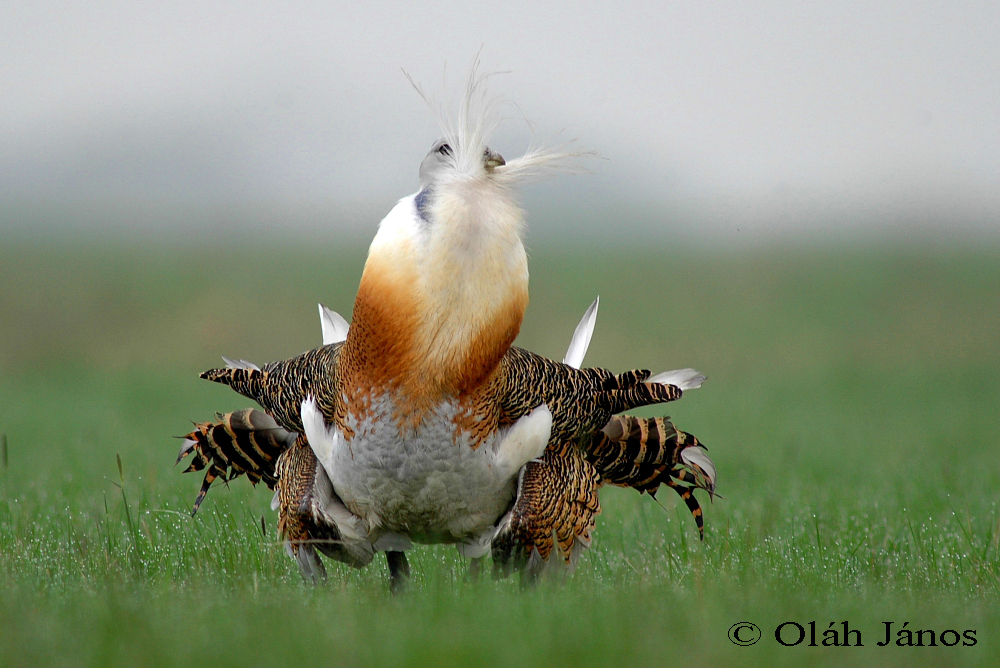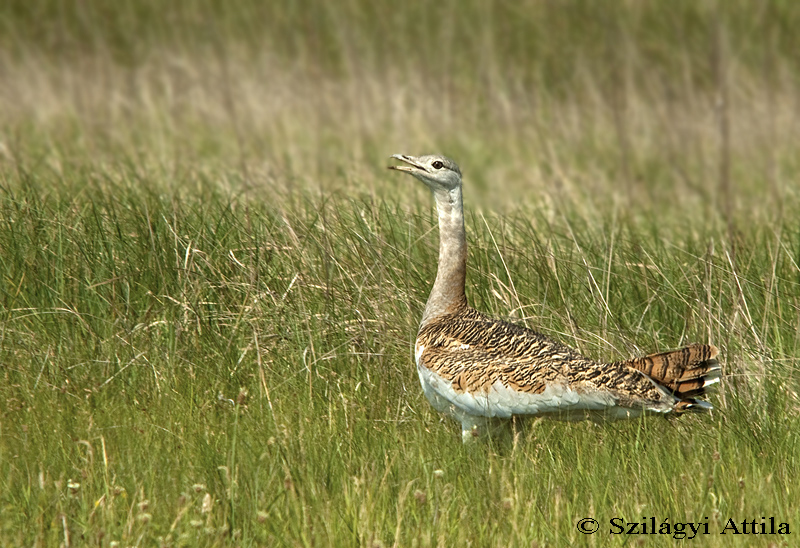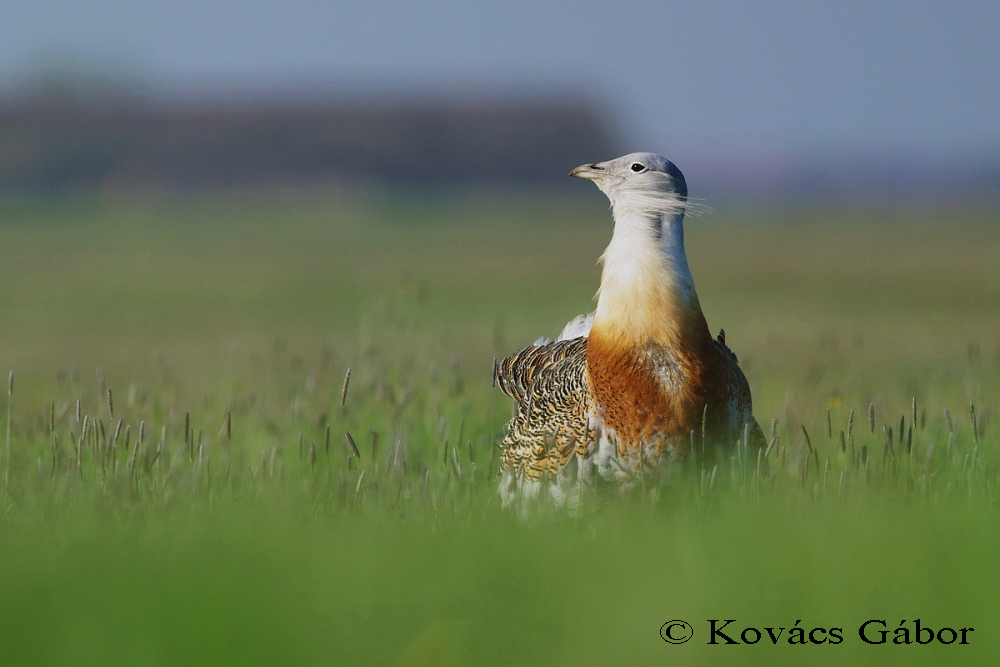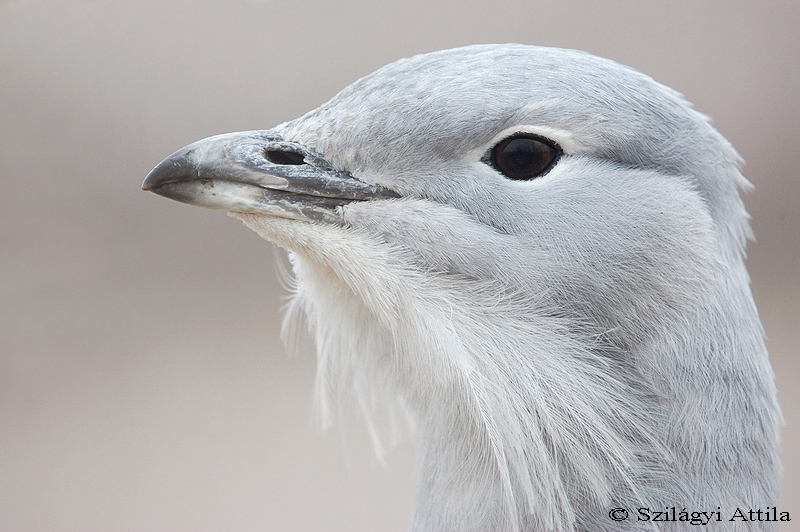Great Bustard (Otis tarda)
German: Großtrappe
French: Grande Outarde
Italian: Grande Otarda
Czeh: Drop veľký
Hungarian: túzok
Croatian: Droplja
Polish: Drop
Slovakian: Drop veľký
Slovenian: Velika droplja
Romanien: Dropie
Serbian: Velika droplja
Ukrainen: Drokhva
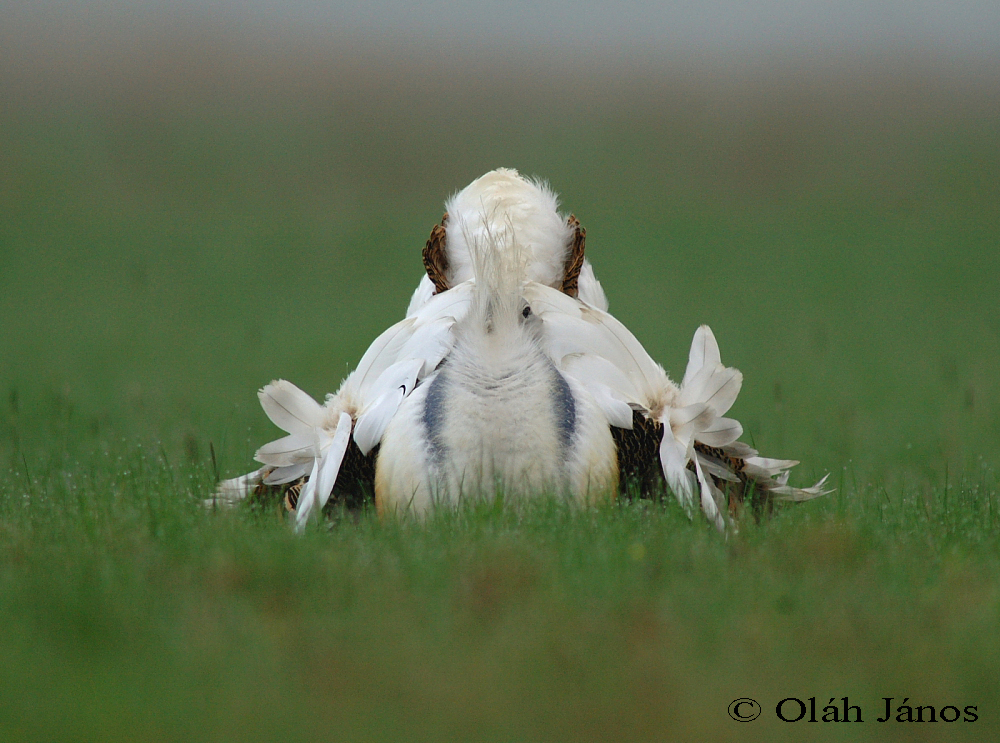
The male of this huge bird is possibly the heaviest living flying bird. An adult male typically is 90–110 cm long with a 2.1–2.5 m wingspan and usually weight from 10 to 16 kg. An adult male is brown above and white below, with a long grey neck and head. The breast and lower neck sides are chestnut. In the breeding season, the male has long white neck bristles (seen on the image 2 below). In flight, the long wings show large areas of white. The female is 30% smaller (typically 80 cm in length and 1.8 m across the wings) and one-third the weight of the male, averaging 3.5–5 kg. The breast and neck of the female are buff. Both sexes are usually silent. Immature birds resemble the female. The Great Bustard breeds from March to June, and a single male may mate with up to 5 females. The display of the species is spectacular, the male bird turns most of its feathers inside out and becomes a “white ball”. This visual display of the males can be seen from several kilometres by the females. All breeding Great Bustards also moult again from June to September. Great Bustards typically live for around 10 years, but some have been known to live up to 15 years or more.
Great Bustard inhabits open grassland, although it can be found on undisturbed cultivation. Habitat loss, fragmentation and hunting decreased the population significantly in the second half of the 20th century. It has a stately slow walk, and tends to run when disturbed rather than fly. It is gregarious, especially in winter. This species is omnivorous, taking seeds, insects and other small creatures, including frogs and beetles.
The World population may number 45,000 individuals of which 4,200-4,500 occur in east Asia and BirdLife International classifies it as Vulnerable. Its Palearctic range is becoming increasingly disjunct and there have been rapid declines and some extinctions throughout eastern and central Europe and in parts of Asia, particularly Kazakhstan and Mongolia. Most populations are partially migratory and 8,000-10,000 birds occur on passage or in winter in Ukraine. In Europe Spain, Rusia, Turkey, Hungary and Portugal has significant populations. More information here!
The steppe grasslands of the Hungarian Great Plain have long been known as a stronghold of the Great Bustard. However, over several decades since 1945 the population declined by about 85 % and was down to 1100 individuals.After very strong protection work has started in the 1980's, the population-decrease stopped and gradually started to increase, and nowadays the Carpathian Basin population is up to 1700 individuals. Please read more about the protection of this fascinating bird in the Carpathian Basin here.
How to photograph them: You can photograph Great Bustards in the World Heritage Hortobágy National Park in Hungary throughout April. For more information check out the Sakertour website!
